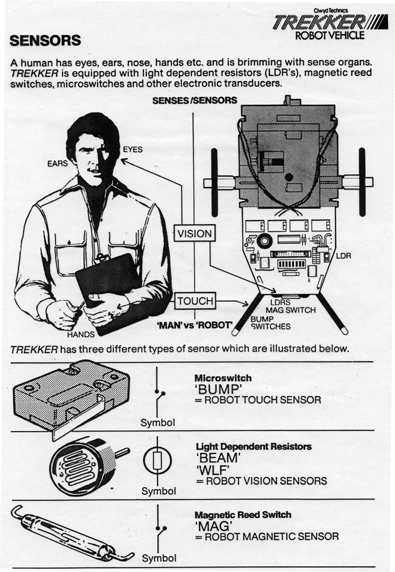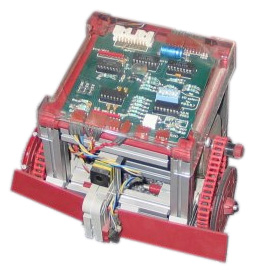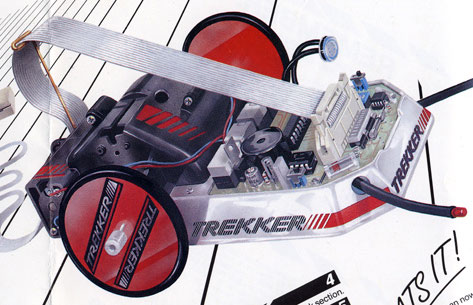BeebControl>>Buggies/turtles |
What's makes a turtle a turtle or a buggy a buggy?
The original 'turtle' concept is generally agreed to have been defined by Seymour Papert and Wally Feurzeig of MIT in the late nineteen-sixties as the main visual element of Logo - their intuitive, educational computer language. An aspect of Logo allows the user to control the movement of an on-screen object (the turtle) to draw tracks or geometric shapes by issuing a series of commands. Electro-mechnical turtles were developed by a number of companies as a natural offshoot of the on-screen version, controlled via an umbilical cable or infra-red link, using extensions to the core Logo command set.
These turtles can mimic the screen turtle's drawing ability by using an onboard pen to trace out their movements. They are normally driven by two stepper motors for precision control, with the pen mounted in the centre of the motors' axes so that the pen can remain stationary as the turtle turns and sharp corners can therefore be drawn. In theory this system allows any two-dimensional shape to be drawn on a flat surface, although most floor turtles are only accurate to within a few millimetres across a complex drawing.
In time, these turtles were developed to perform other functions such as supplying sound or light feedback, obstacle sensing and white line following. Which is where the line between turtles and buggies starts to blur.
|

|

|
The BBC Buggy
The BBC Buggy was developed by Economatics and was based on standard fischertechnik parts. In fact the Buggy was supplied in kit form, rather like a actual fischertechnik set, half the fun being to put one together from scratch. The buggy came with obstacle sensing paddles and light detecting feedback as standard. It could be turned into a turtle with the addition of a pen kit, or into a rudimentary robot with the addition of a set of front grippers. |
Jacks of all trade
Other designs claimed to be able to perform various combinations of tasks, but none quite matched the BBC Buggy's add-on kit capabilities. Some though, like the Trekker 'robot vehicle' from Clwyd technics, concentrated on speed of roaming by swapping the precision of stepper motors for geared induction motors to help them get around. As well as a pen slot, Trekker boasted obstacle sensing via 'feelers', an LDR light sensor, white line follower, beeper and nose mounted reed switch for magnet detection. It also looked racier than most of its contemporaries with its shape owing more to radio controlled cars than turtles or robots. |

|
<< HomeAll content on this website is © Neil Fazakerley 2003-2006 or its originators |
|



